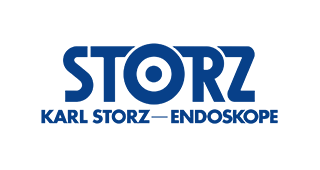SIU-WJU Article of the Month – July 2019
Extending the literature on use of electroacupuncture for urge urinary incontinence
SIU Academy®. Gacci M. 07/22/19; 276251
Topic: TreatmentExtending the literature on use of electroacupuncture for urge urinary incontinence
CLICK HERE TO LOGIN
REGULAR CONTENT
REGULAR CONTENT
Login now to access Regular content available to all registered users.
To have an exclusive access to the entire content available on SIU Academy, become an SIU Member here.
To have an exclusive access to the entire content available on SIU Academy, become an SIU Member here.
Abstract
Discussion Forum (0)
Rate & Comment (0)
Objective
To compare the effects and safety of electroacupuncture (EA) and the integration of pelvic floor muscle training
(PFMT) and solifenacin in women with urgency-predominant mixed urinary incontinence (MUI).
Methods
The study was a secondary analysis of a randomized noninferiority trial which recruited 500 women with MUI and randomized 178 with urgency-predominant MUI to either receive 12-week EA treatment and 24-week follow-up or 36-week PFMT–solifenacin treatment. Clinical response was defined as at least 50% reduction in average 24-h urgency incontinence episode frequency (IEF), measured by 72-h voiding diary through weeks 1–12.
Results
Of the patients randomized, 173 completed the study. The clinical response was 45.78% in EA group, similar with
50.0% in PFMT–solifenacin group, with a difference of − 3.54 (95% CI − 19.08 to 12.0; P = 0.66). In both groups, the proportion of patients with at least 50% reduction of IEF and stress IEF were improved, while the score of ICIQ-SF, episodes of urination, nocturia and urgency, 1-h amount of urinary leakage (AUL), proportion of patients using pads and the number consumed were all decreased after 12-week treatment. The effects could sustain till 36 weeks. Adverse events occurred less in EA group.
Conclusions
EA might reduce IEF, AUL and improve the life quality of female patients with urgency-predominant MUI.
The effect may sustain till 36 weeks.
Keywords
Acupuncture · Urge · Stress · Non-inferior · Pelvic floor muscle training · Solifenacin
Abbreviations
MUI Mixed urinary incontinence
UUI Urgency urinary incontinence
PFMT Pelvic floor muscle training
SUI Stress urinary incontinence
EA Electroacupuncture
IEF Incontinence episode frequency
ICIQ-SF International Consultation on Incontinence
Questionnaire-Short Form
AUL Amount of urine leakage
To compare the effects and safety of electroacupuncture (EA) and the integration of pelvic floor muscle training
(PFMT) and solifenacin in women with urgency-predominant mixed urinary incontinence (MUI).
Methods
The study was a secondary analysis of a randomized noninferiority trial which recruited 500 women with MUI and randomized 178 with urgency-predominant MUI to either receive 12-week EA treatment and 24-week follow-up or 36-week PFMT–solifenacin treatment. Clinical response was defined as at least 50% reduction in average 24-h urgency incontinence episode frequency (IEF), measured by 72-h voiding diary through weeks 1–12.
Results
Of the patients randomized, 173 completed the study. The clinical response was 45.78% in EA group, similar with
50.0% in PFMT–solifenacin group, with a difference of − 3.54 (95% CI − 19.08 to 12.0; P = 0.66). In both groups, the proportion of patients with at least 50% reduction of IEF and stress IEF were improved, while the score of ICIQ-SF, episodes of urination, nocturia and urgency, 1-h amount of urinary leakage (AUL), proportion of patients using pads and the number consumed were all decreased after 12-week treatment. The effects could sustain till 36 weeks. Adverse events occurred less in EA group.
Conclusions
EA might reduce IEF, AUL and improve the life quality of female patients with urgency-predominant MUI.
The effect may sustain till 36 weeks.
Keywords
Acupuncture · Urge · Stress · Non-inferior · Pelvic floor muscle training · Solifenacin
Abbreviations
MUI Mixed urinary incontinence
UUI Urgency urinary incontinence
PFMT Pelvic floor muscle training
SUI Stress urinary incontinence
EA Electroacupuncture
IEF Incontinence episode frequency
ICIQ-SF International Consultation on Incontinence
Questionnaire-Short Form
AUL Amount of urine leakage
Objective
To compare the effects and safety of electroacupuncture (EA) and the integration of pelvic floor muscle training
(PFMT) and solifenacin in women with urgency-predominant mixed urinary incontinence (MUI).
Methods
The study was a secondary analysis of a randomized noninferiority trial which recruited 500 women with MUI and randomized 178 with urgency-predominant MUI to either receive 12-week EA treatment and 24-week follow-up or 36-week PFMT–solifenacin treatment. Clinical response was defined as at least 50% reduction in average 24-h urgency incontinence episode frequency (IEF), measured by 72-h voiding diary through weeks 1–12.
Results
Of the patients randomized, 173 completed the study. The clinical response was 45.78% in EA group, similar with
50.0% in PFMT–solifenacin group, with a difference of − 3.54 (95% CI − 19.08 to 12.0; P = 0.66). In both groups, the proportion of patients with at least 50% reduction of IEF and stress IEF were improved, while the score of ICIQ-SF, episodes of urination, nocturia and urgency, 1-h amount of urinary leakage (AUL), proportion of patients using pads and the number consumed were all decreased after 12-week treatment. The effects could sustain till 36 weeks. Adverse events occurred less in EA group.
Conclusions
EA might reduce IEF, AUL and improve the life quality of female patients with urgency-predominant MUI.
The effect may sustain till 36 weeks.
Keywords
Acupuncture · Urge · Stress · Non-inferior · Pelvic floor muscle training · Solifenacin
Abbreviations
MUI Mixed urinary incontinence
UUI Urgency urinary incontinence
PFMT Pelvic floor muscle training
SUI Stress urinary incontinence
EA Electroacupuncture
IEF Incontinence episode frequency
ICIQ-SF International Consultation on Incontinence
Questionnaire-Short Form
AUL Amount of urine leakage
To compare the effects and safety of electroacupuncture (EA) and the integration of pelvic floor muscle training
(PFMT) and solifenacin in women with urgency-predominant mixed urinary incontinence (MUI).
Methods
The study was a secondary analysis of a randomized noninferiority trial which recruited 500 women with MUI and randomized 178 with urgency-predominant MUI to either receive 12-week EA treatment and 24-week follow-up or 36-week PFMT–solifenacin treatment. Clinical response was defined as at least 50% reduction in average 24-h urgency incontinence episode frequency (IEF), measured by 72-h voiding diary through weeks 1–12.
Results
Of the patients randomized, 173 completed the study. The clinical response was 45.78% in EA group, similar with
50.0% in PFMT–solifenacin group, with a difference of − 3.54 (95% CI − 19.08 to 12.0; P = 0.66). In both groups, the proportion of patients with at least 50% reduction of IEF and stress IEF were improved, while the score of ICIQ-SF, episodes of urination, nocturia and urgency, 1-h amount of urinary leakage (AUL), proportion of patients using pads and the number consumed were all decreased after 12-week treatment. The effects could sustain till 36 weeks. Adverse events occurred less in EA group.
Conclusions
EA might reduce IEF, AUL and improve the life quality of female patients with urgency-predominant MUI.
The effect may sustain till 36 weeks.
Keywords
Acupuncture · Urge · Stress · Non-inferior · Pelvic floor muscle training · Solifenacin
Abbreviations
MUI Mixed urinary incontinence
UUI Urgency urinary incontinence
PFMT Pelvic floor muscle training
SUI Stress urinary incontinence
EA Electroacupuncture
IEF Incontinence episode frequency
ICIQ-SF International Consultation on Incontinence
Questionnaire-Short Form
AUL Amount of urine leakage
Code of conduct/disclaimer available in General Terms & Conditions
{{ help_message }}
{{filter}}







